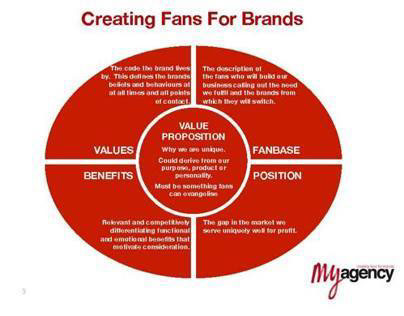Photo by Joe Stubbs on Unsplash
The new pandemic paradigm
It is now generally accepted that where and how people work has changed forever. There is no going back. In some cases, literally. With working from home becoming a permanent feature, either optional or enforced. And, sadly, with jobs and roles being eliminated.
There is less consensus on how this pandemic shift plays out for FlexSpace operators. Many suggest that the new pandemic paradigm will drive increased demand for space as companies look to unwind long term lease commitments and reduce costs. This is undoubtedly true. Others, looking optimistically through the glass half full, suggest that occupiers may even be on the lookout for additional space due to social office distancing measures. (It is, of course, their job to talk up the sector.) Yet, as opportunities come in the front door, so we could also see the traditional, smaller SME occupier exiting the back door for precisely the same reasons of flexibility and cost mitigation.
All this plays to the basic, generic, albeit attractive category features of FlexSpace. However, if operators do not move beyond this table stakes offer, they open themselves up to the risk that it will create a race to the bottom in terms of pricing. Particularly in a world where supply outstrips demand; particularly in City Centres which still look like the opening sequence from the movie 28 Days Later. In fact, even before lockdown there was a lot of industry chatter that some operators were using their own rent free periods from landlords (and / or cash mountains from VCs) to subsidise inherently unprofitable license fees and / or underwrite unsustainable broker commissions. Right now, many will be tempted to trade occupancy levels for cash revenue, in the hope that pricing can be recovered down the track.
There are signs that the more sophisticated operators have acknowledged this risk. A founder of one of the most successful FlexSpace operators I was talking with the other day accepted this and pointed me towards Andrew Krioukov’s neat take on Maslow in his Hierarchy of Real Estate needs piece. That said, even Krioukov’s orientation is still too heavily feature-led (Prop Tech), rather than working back from the real needs of users. The ever interesting @Caleb_Parker is fond of quoting @antonyslumbers classic saying: “businesses don’t want an office, they want a productive workforce”. Pivoting to the productivity from the real estate market is precisely where FlexSpace operators should be concentrating. Cost savings become a naturally corollary of this approach.
This gets philosophical (or at least linguistical) very quickly. In the same way that employees singular ‘job description’ comprises a plurality of tasks, so ‘work’ is both a singular and a plural noun. To date, the thinking of too many FlexSpace operators has been too singular and inflexible. The product is still often homogenised and commoditised (yup that includes the motivational wall slogans) into units for 10 / 20 / 30 desk, as if all companies and their employees are doing the same thing, all day, every day. Hello, news flash: they do not.
Companies have become wise pretty quickly to the vastly different types of work that each and every employee undertakes. They are also developing an understanding of what type of working environment is suited best and is most cost effective to execute a particular working mode. For example, if the employee is in the business of processing business-as-usual tasks, then they are most productive with fewer distractions. That is one of the main reasons why many folk have really like working from home. WFH suits that kind of activity. (The fact that is precisely these kinds of activities that will shortly be automated away from the need for any human intervention, we will leave for another time.)
WFH and, remarkably, working in the office given the years and years most people have spent in them, is not really suited to the key value creation activities that derive from collaboration, innovation, and propagation of social intelligence. The activities that differentiate and gives companies an edge, a future. This needs more than ‘quiet time’ at home, or fussball and ping pong at work. But it certainly requires space, a fit for purpose, inspiring environment, but not an office per se.
Then there is the thorny subject of meetings. Everyone loves to hate them. No one is taught how to run them efficiently and effectively. To borrow the adage, meetings exist to expand to fill the time employees spend in the office. Meetings exist without metrics. Until now. Suddenly, companies are becoming acutely conscious of the cost of getting everyone into the room, together with the additional cost of having everyone in the room. This is forcing the value question onto the agenda. The physical meeting of the future better be worth it. Currently, most would agree 99% are not. Again, meetings do not need an office; they need fit for purpose space. (And, upsell opportunity, they need educational and facilitation services to make them better, a more productive use of time.) There is a fascinating primer on all this in this Freakconimcs podcast.
Another example is recognising the B2B purchasing process. The reality is that it mirrors the way of retail. At best a company’s product or service is ‘showroomed’ or sampled in a physical location and, increasingly, before the deal is done digitally. Many offices can act as impediments to a sale. For example, clients have moaned since the dawn of time about the cost of well-located and well-appointed offices of their agencies. The reckon that they client picks up the tab at the end of the day. Again, do not think office; think showroom.
I could go on.
What we are witnessing is the unbundling of the office. True flexibility, genuine Space As A Service, is the provision of access to a range of fit for purpose environments as and when they are needed. Paying for access rather than ownership of the spaces is the new business model. Perhaps we will move beyond basic ergonomics and space management, to a purpose led era of user centric design of working environments. The operators that thrive in the new paradigm will be those that can best help their clients achieve their value objective to help maximise the return on investment in human capital. A new paradigm indeed.










